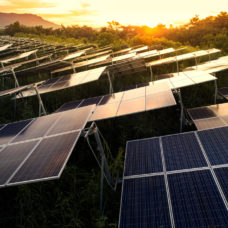Photosynthesis is a process that plants and other organisms use to convert light energy into chemical energy to fuel the organism’s activities.
The process involves converting carbon dioxide into fuel — a promising way to reduce carbon emissions. As such, researchers have been working to replicate the process.
For example, last year, scientists at the University of Illinois developed a method to turn CO2 into liquid fuel.
While artificial photosynthesis can aid the transition away from fossil fuel, it comes with a downside. Producing clean fuels without several unwanted by-products can be challenging.
In a statement, researchers from Cambridge’s Department of Chemistry, Dr. Qian Wang said:
“It’s been difficult to achieve artificial photosynthesis with a high degree of selectivity so that you’re converting as much of the sunlight as possible into the fuel you want, rather than be left with a lot of waste.”
Besides cleanly producing liquid fuels, there’s also the issue of storage and transportation. But that could change soon.
In a published paper in the journal Nature Energy, Dr. Qian Wang and colleagues described a potentially game-changing device.
Using Wireless Phtosheets to Turn CO2 and Sunlight into Clean Fuel
Previously, the team developed a type of artificial leaf that’s works the same way as natural leaves. It converts sunlight and water into fuel known as syngas — carbon monoxide and hydrogen.
The new technology looks and functions similarly. It captures sunlight from perovskite light absorbers, a component in some solar cells. However, the team tweaked the approach a bit.
Instead of the perovskite light absorbers, the new platform uses cheap photocatalysts that consist of semiconductor powders. This resulted in clean fuel of oxygen and formic acid, with very little by-products.
“We were surprised how well it worked in terms of its selectivity – it produced almost no by-products,” says Dr. Wang. “Sometimes things don’t work as well as you expected, but this was a rare case where it actually worked better.”
Now, the researchers are working to improve the device’s efficiency and trying out new catalysts. It might also help produce different types of solar cells.



















Comments (0)
Most Recent